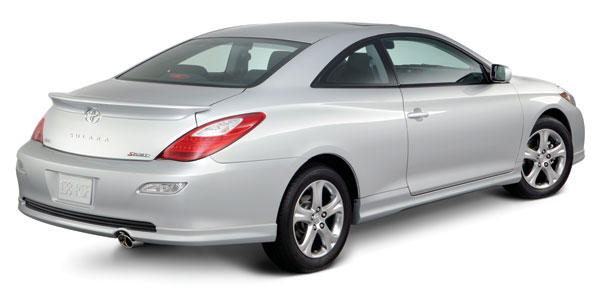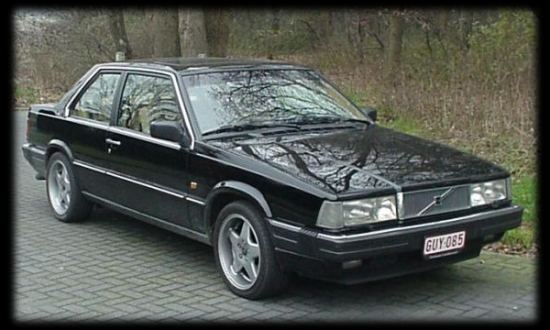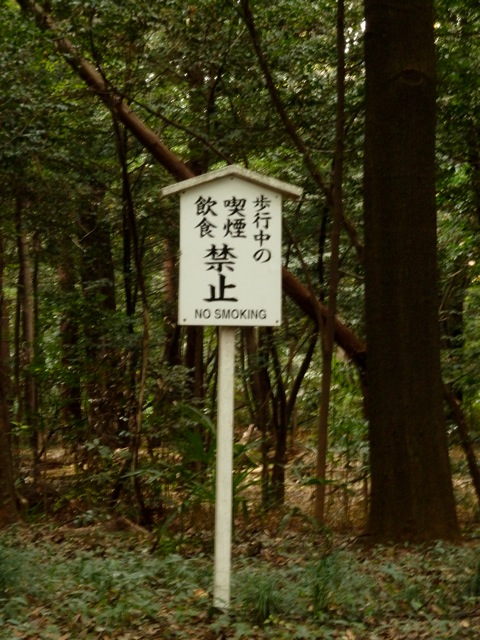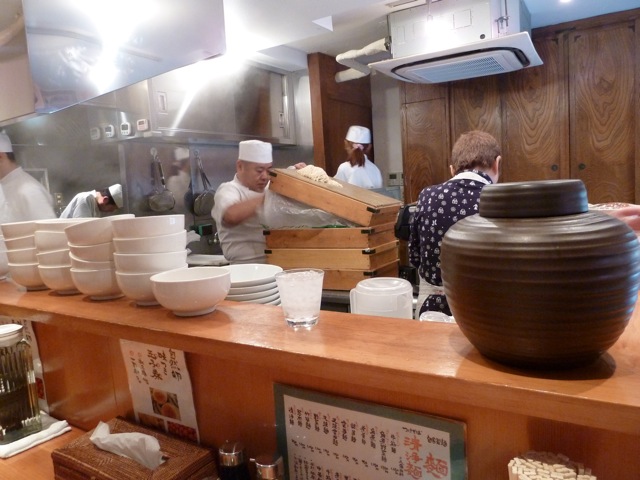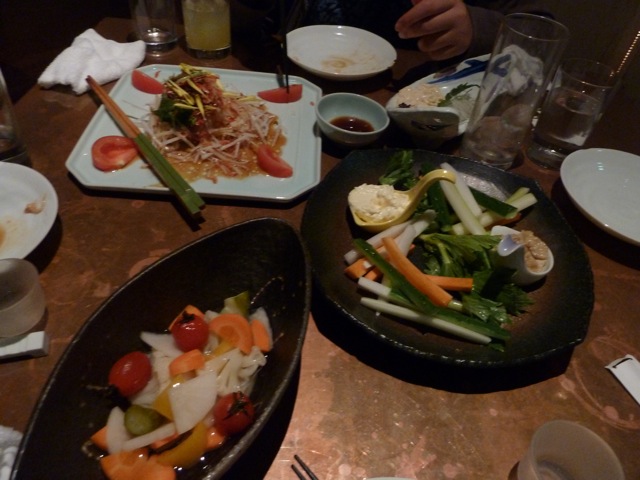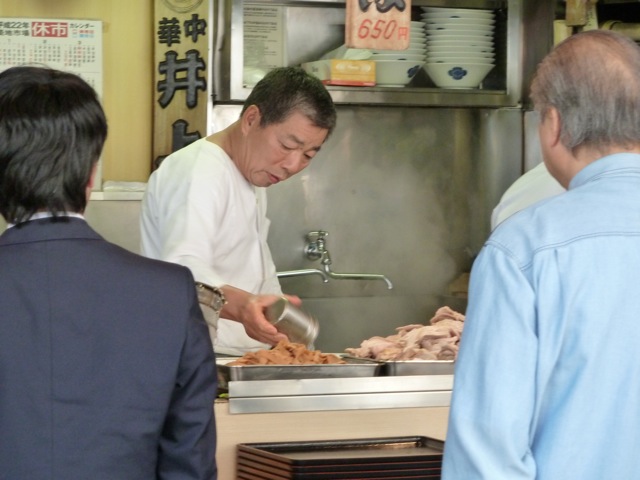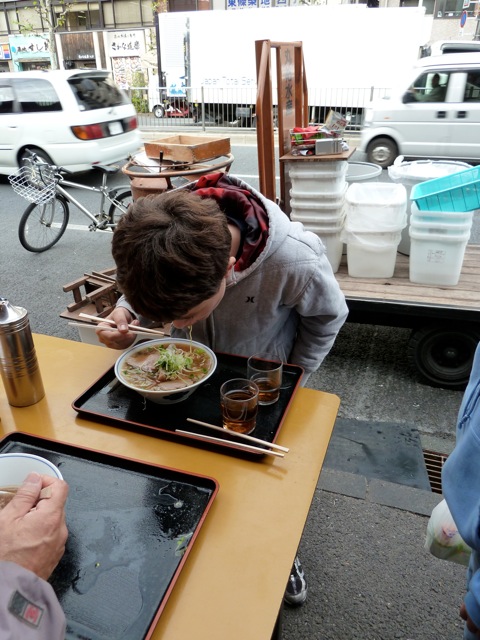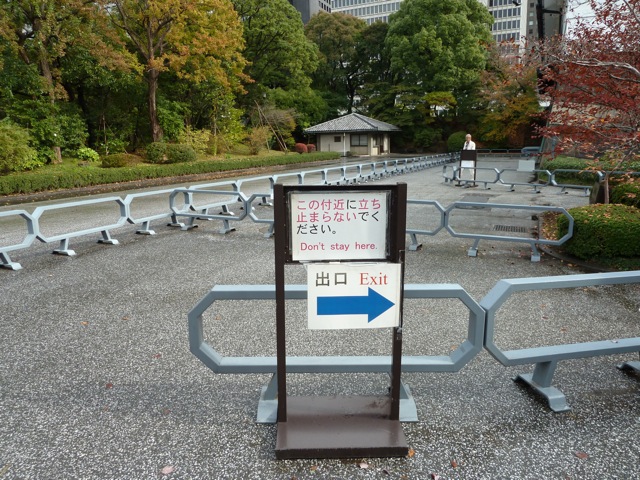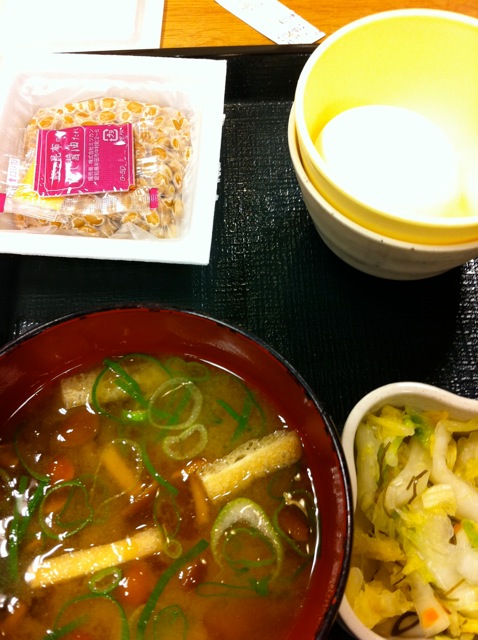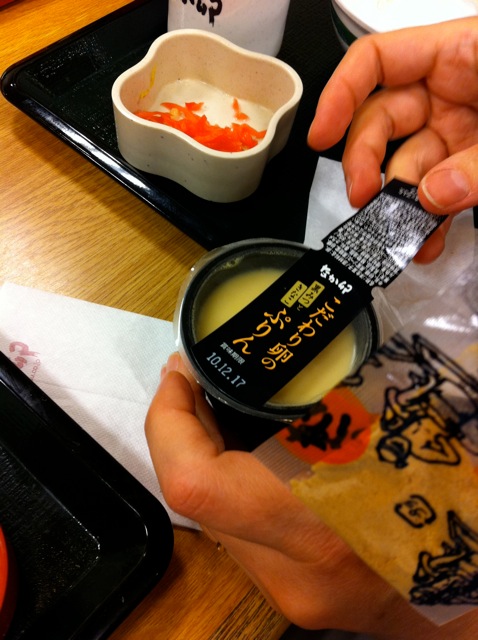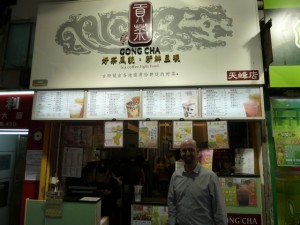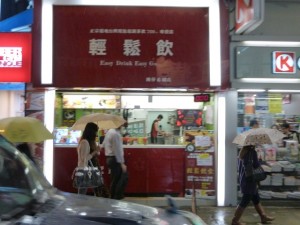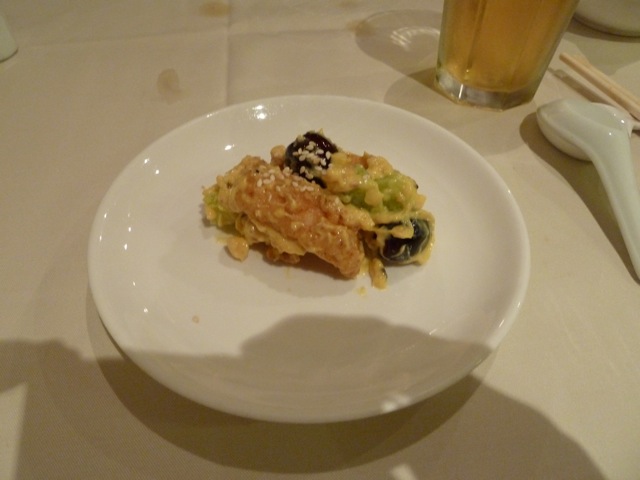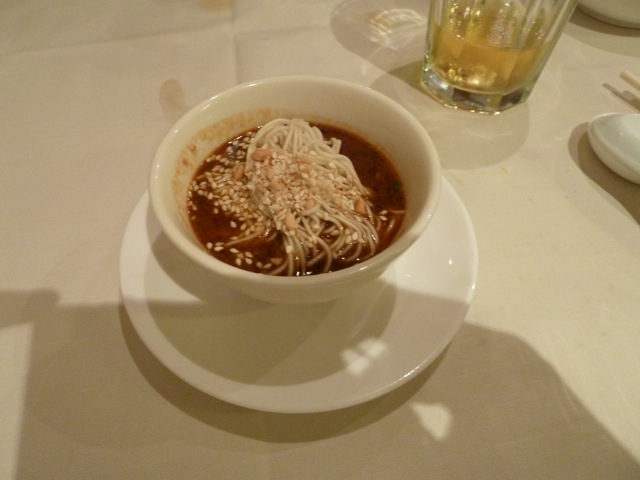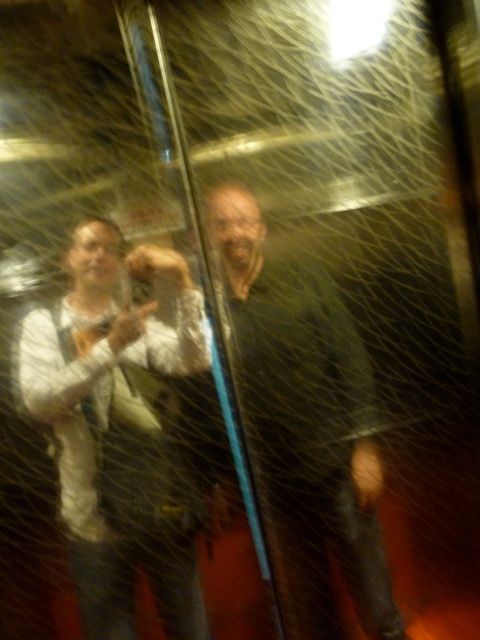I’ve been in the situation several times where I want to be able to share my Wifi connection to multiple devices. I know this sounds counter-intuitive, and it’s less and less necessary, frankly. But I’ve had it come up many times:
- I was in a small hotel in Belgium where they gave one Wifi, with code, per room per day.
- On airplanes, Gogo can only be used on one device.
- Boingo and Skype Wifi both work with one computer at a time (as far as I can figure) and both charge by time.
When I first hit that situation in Belgium, we had two laptops which both had ethernet ports, and we had an ethernet cable. So we shared the connection: Laptop 1 logged in via Wifi and used Internet Sharing to share via ethernet to Laptop 2. Laptop 2 connected to the internet via ethernet and used Internet Sharing to share that over Wifi. Worked fine, but we had to keep both laptops on to use our phones, etc. Plus, no current MacBooks have ethernet, so this would necessitate two ethernet adapters today.
My next solution was to carry a small travel router that creates its own Wifi network (great for hotels – I like the TP-LINK TL-WR702N, but there’s a newer model). In a hotel, I plug that into ethernet, and I’m done. On a plane, I connect my MacBook to Wifi with Gogo. Then I connect my USB-ethernet adapter to this router and share from my laptop. This works, but it’s a lot of parts, and uses two USB ports (one for the network and one to power the router).
On to the one I’m pretty happy about, and the main subject of this post: a tiny USB-Wifi adapter from TRENDnet. The model I got is the TEW-648UB. It’s about $8 on Amazon. And it’s really tiny. And it gets all of its power via USB.
The biggest annoyance with this method is that you have to install a driver. I hate that. I wish things were just generic enough to work. This isn’t. And the latest driver seems to be for Mac OS 10.8. But I installed it, and it works just fine. The setup is a little clunky, but not too bad.
With the Wifi adapter method, this TRENDnet adapter can’t create its own network, so it has to be the one to connect to the established Wifi. Then, that gets shared to the laptop’s built-in Wifi via the Internet Sharing control panel. Here are the steps:
- Buy the TRENDnet TEW-648UB. Here’s an Amazon link.
- Download and install the latest Mac driver (10.8 at the time of this writing).
- Use the TRENDnet app to connect to your existing Wifi network.
 Not the smoothest app, but it works. You might need this
Not the smoothest app, but it works. You might need this
- Make sure it’s connected in your Network System Preference – here’s where you’ll see it. In my pic, it’s NOT connected. Sorry for the bad pic:
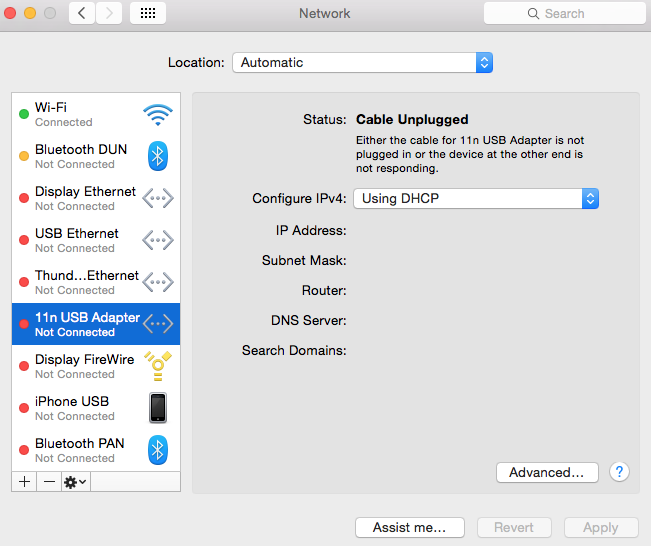
- Once you get that part right, go to your Sharing pane and set it up like this:

- Once the Share pop-up has the adapter and the To area has the built-in Wifi, then click the box on the left to start the sharing. If you’ve never shared a network from this Mac before, be sure to go into the options to give your new network a good name and a password.
- From here, your other computers/tablets/phones should be able to connect to the network you created.
I have had a love/hate relationship with the Groupons and LivingSocials and Amazon Locals and everything else. I think I’ve finally gotten over buying coupons to restaurants that I wouldn’t go to without the coupon. But I still can’t help myself from buying coupons for restaurants that I already visit. And, it seems, I need to stop that also.
A few months ago, I bought coupons to AOC on OpenTable – $25 for a $50 credit. I bought three. I read the terms, and knew we couldn’t use them for the Monday night specials, which is when we’ve usually gone recently. But I figured I’d use three anyway. Six months for three coupons? Didn’t seem so wrong, but considering we couldn’t go on Mondays, it was a little much. Five months in, and now I’ve used one.
But that one wasn’t easy. We had a good night to go, so we planned it out, made a reservation, etc. This was a busy night, the day before we were leaving for a trip. But we thought it would be relaxing to have a slow dinner and get a break from our week and set the tone for a trip.
We had a pretty rushed evening, and just made it to the restaurant on time. But five minutes after we sat down I realized, I didn’t have the coupon! Essentially the whole reason for the dinner was to use the coupon. I made the quick decision to run home (literally) grab the coupon, and run back. And I did – it took me about 15 minutes round-trip.
OK – here’s the best part: our waitress, seeing me flushed and sweaty all of a sudden, hinted about whatever I had just done. I explained. And she told me that she could have just looked me up in the computer and given me the credit. Amazing.
Well, I got a good run in, and I reinforced the problems with the coupons. I’m hoping I’ll finally resist the urge, once and for all!
Over the weekend, over some good homemade Mozza-recipe pizza and Belgian beer, we happened upon the Toyota Solara. This is a car I’ve long despised, but I thought that I was alone in my specific hatred of its design. It turns out that there are other quite aesthetically enlightened members of my family who have also noticed the bland styling of this bastardized Camry.
#1: The Toyota Solara
Why anyone would choose this car is beside me. It’s not sporty and it’s not practical. It’s not especially cheap or economical. And it’s typically driven by brown-cigarette-smoking ladies of a certain age whose frou-frou pooches ride shotgun. But, this car has also been spotted piloted my straight men in Phoenix, and a certain rabbi in Orange County.
OK, let’s be honest here. Toyota has never really been a leader in the looks department. In fact, this mobile does seem like an evolution of their also-ugly, also bastardized-sedan, Acura Legend.
#2: Mercedes Coupes
The Solara is a tough act to follow – it distances itself from the pack by having no useful purpose whatsoever. But for the ladies with little Snookums with a bow in his hair who need something that shows that their first husband had a little cash, there’s the Mercedes S-class coupe.
Clearly a car where all design was poured into the sedan, and then a butcher modified it remove two doors and appeal to another demographic: the blind.
The same staff butcher over at Daimler also had his way with the C-class. Witnesseth:
Good German People! Did you look at these things?
#3 BMW 3-Series
I’m sure I’ll get some pushback on this one, and I agree that the sedan, and even the wagon, of this line are pretty decent looking cars. But, like Benz boys, that coupe is just tooooo looooong. When you cut the doors, cut the length! If people want two doors only – hey? – maybe they don’t have kids? Maybe they rarely use the backseat? Then, you ask, why not get a true sports car? That’s the question of the ages.
Now, I have to give BMW credit for stealing an old and great American car company idea. They’ve got one line (the 3 series) that comes in convertible, coupe, sedan, and wagon. It’s like a Bayerische Malibu family. Of course, at one point, that Malibu front end was mated to a pickup backend – but don’t even get me started on the lovely El Camino.
#4 Honda Accord Coupe
You’ve gotta give Honda some credit. The Accord coupe looks pretty different than the sedan. They really did redesign it. But you’ve got to take that credit away when you look at the thing.
You might look at this and think “blah blah blah, whatever.” That’s why Honda added the tail wing as an option! Oh, brother.
#5 Volvo 780 Bertone
This car was truly an enigma. Nothing at all like the sporty Volvo coupes that preceded it, this beast was the province of a certain pre-Eurotrash Euroman who wore windowpane blazers and ascots.
I can’t imagine what the good uomos at Bertone were thinking when they let this project see daylight, but I guess Lotus worked with Isuzu, and Rover with Honda, among other collaborations, so this is par for the course.
This whole discourse makes me think of the pathetic Saab tagline “born from jets.” These coupes are all “born from sedans.” It also make me think, you know what? Those Saab coupes weren’t too bad looking . . .
Who’s got time to blog anymore?
Anyway, I did want to get a list down of the restaurants that we thought were worth recommending. Really, pretty much everything we ate was good, at the very least. So that means we didn’t try Yoshinoya, but we did even go to some pretty down and dirty noodle shops for quick meals, and that food was certainly passable.
But here’s the good stuff:
Suzuran
Very hard to say, but this might have been my favorite of the trip. This was an old-school noodle house featuring tsukemen, which is a noodle I didn’t really know about until this meal. They’re thicker and saltier than soba, made from white flour (I think) and nice and al dente. I found this place on Chowhound.
The noodles were great. They come served with pork belly (not really as fatty as US pork belly, so maybe it’s a different cut) or sliced pork. Of course, we got both. Then they come with bowls of broth with veggies. They have shoyu or miso. You can guess which we got (both). You dunk the noodles in and load up the soup, eat them with veggies and pork. Heaven.
And there are two other great items: the aged egg (liked it, but pretty mild) and the negi-wonton, as in, scallion-wonton. It’s a plate of pork dumplings, with homemade wrappers, clearly, in a nice soy-based sauce, covered with scallions. Loved it.
Important note here: pretty much no English is spoken at Suzuran. We ran into some Americans there who tried to help, a bit, but they were kinda lost, too. And it was our first morning, so we didn’t really know how to deal yet. The menu has some pictures, but we figured out, after we ordered, that the more complete pictures are inside the restaurant on the wall above the front window. You might try ordering by pointing at these if you go.
Finally, a line forms. We got there a few minutes before they opened for lunch (11:30?) so we got right in.
Next up:
Yuian
Another find on Chowhound. We were looking for something good and close to our hotel after a long day walking the streets and riding the subways. We really weren’t expecting much; I guess that’s the best mood for being surprised.
Yuian is located on the 52nd floor of the Sumitomo building in Nishi-Shinjuku, so it was basically across the street from the hotel, which was the main selling point to us. I don’t think I’ve dined on top of a skyscraper since Windows on the World. If you remember that restaurant, you know how long ago that would have to be.
Anyway, this was our first shoeless experience, which was definitely fun. The place had a gorgeous sushi bar and waiting area, and then, when we were taken to our table we were shocked to find out that we were sitting on the floor (with a foot well) right at the floor-to-ceiling plate glass windows looking out over Tokyo. I guess, considering the number of skyscrapers in Tokyo, this isn’t such a rare situation, but it was spell-binding nevertheless to us lowly Angelenos.
OK – the order of the day here is Izakaya. So we ordered some sake and a ton of appetizers and went to town. They do also have a set menu, but we didn’t go that route. We went fried, pickled, steamed, etc.
In addition, we had sushi and sashimi (both great) and my favorite item of the night was a tofu skin (yuba?) in tofu milk, or something like that. The English translation was “sleeky tofu” which would seem about right, if only sleeky were a word. Maybe they meant slimy? Silky? It was both of those. Also mucousy. And great!
Third up, was another noodle place. At home, I don’t think I’m that crazy for noodles, but here, I couldn’t get enough. And we never did find excellent soba, but that’s another story.
Chuka Soba Inoue
Apparently, ramen was once called “chuka soba.” So this old-school ramen hut uses the old terminology. Confusing, but fine.
We found this place listed in a few spots on the web – one being the New York Times, actually. And we knew we’d be walking by it on the way to Tsukiji, so we figured we ought to pay a visit.
There’s only one order of business here on the “menu,” and that’s a bowl of ramen. Granted, no English was happening, but I’m pretty sure that there’s nothing to say, other than the number of bowls you want. Then they boil your noodles, make your broth, add the MSG, assemble, and lay pork slices and bamboo shoots on top, with some scallions. Done.
You take the bowl, and walk over to one of the bar tables nearby, and slurp away.
Here’s Leo doing just that:
I was a little scared to step away and snap the pic because I thought he might suck the whole bowl down before I had a chance to dig in.
So that’s the roundup of the great meals. We also had many, many others that were both delicious and memorable, including shabu shabu, a nine course tofu meal, grilled eel, all-you-can-eat deep fry, tonkatsu style, tons of street food (mochi, roasted sweet potatoes, and plenty of other things that we can’t name, still), gyoza (yes, a whole meal of it), tempura (not as good as I was hoping for, actually) and, of course, sushi. I would say the one letdown was the tempura – we need to try again on that. And the soba we had was at fast-food-ish type places, so next time, we need to find a handmade, 100% buckwheat soba place.
I can’t wait to go back!
Generally a big fan of the NY Times Sunday Business section, I was especially interested in this article in today’s paper:
A Bully Finds a Pulpit on the Web
Many, many good points were brought up in this article, and as both a consumer and an e-tailer, I found myself thinking seriously about several issues here.
The overwhelming theme of the article is that Google ranks websites largely on the basis of links from other sites, especially sites that themselves have lots of other links. So a link from nytimes.com is worth more to a site than a link from here. Obvious perhaps, at this point in the evolution of the internet. What isn’t so obvious is that getting links is important, and bad links may be just important.
It’s hard to get good links. Very hard. It took us years to get a good link on TiVo’s website. And it’s valuable, probably.
But it’s a lot easier to get bad links, as the subject of the article demonstrates. And even the “bad” links can lead to links in places like nytimes.com. Since Google isn’t ranking on the positives or negatives of a company, but just the popularity of links largely, all links help. Very enlightening.
We had a DDoS attack on our website about seven years ago. Initially, we just hoped we’d be able to continue in business, which we were fortunately able to do. But after the devastation wore off, we hoped we’d at least get some good links from the bad press. Of course, we also worried that we’d get a bad reputation with people mistakenly thinking that our website had been hacked, which it hadn’t been. But the difference between being attacked and being hacked is a little obscure.
We did manage to make it to the front page of the Wall Street Journal, amazingly. So we probably did get some Google juice out of the whole nightmare. Overall, though, we surely lost. I’d never go through that again.
But this guy, the subject of the article, relishes the problems, and specifically infuriates customers to create bad press, which, as the old saying goes, is still news.
The problem is that just searching on Google and locating a vendor for a product really isn’t enough research. It’s not as good as a personal recommendation – not even close. If you are about to deal with a site you’ve never heard of, it makes sense to take some precautions, like using sites like epinions or ResellerRatings to see if the company is legit. I also often use a ShopSafe credit card number (a service for making temporary cc numbers based on B of A credit cards) and my business address with unknown websites, just to limit the possible consequences of making a mistake.
Finally, I was intrigued that this guy (and I’m not linking to him or even typing his name on purpose) does actually get wound up by the nonsense that he spews. If I get a few tough customer service phone calls in one day, they can really torpedo the day for me. It’s emotionally grueling. Granted, he’s essentially on the other side, being the provoker, but it still can’t be fun. Yet, I do have to agree with him on the “customer is always right” front. Where did that come from? Why can’t a merchant be right? Maybe not him, but an honest one, anyway.
First morning in Tokyo, we went out for a bite to a place that was open early. The concierge said it was like a Yoshinoya basically, which didn’t sound great, but better than the other options: McDonalds and Dennys.
Things are different here.
We finally figured out to order our food from a machine on the wall by picture. When you order, it prints out a ticket and literally yells the order to the back. A recorded woman’s voice just barks out the order. This was definitely a little surprising.
Here are pics of the machine where we ordered, and some of the food:
Well, after years of drinking tea with boba, I’ve come to learn that Hong Kong claims to be the birthplace of milk tea, which is basically the tea you drink with boba. Now, I’m not really sure how milk tea differs from the old English tea with cream and sugar, but there’s some whole story about straining it through pantyhose for some reason – anyway, they claim it.
And there are quite a few shops around town that serve it. We tried one in Mong Kok in Kowloon called Gong Cha where I got a crazy version with this strange thick frothy sweet milk on top that you sample first, then mix in to the rest of the drink.
It was definitely unusual, so it was interesting, but I’m not sure it was my cup of tea.
Next we got into the witty-names place. We went to Easy Drink, Easy Go.
Yes, that’s Eric there behind the umbrella. Sometimes I really have a way with the camera.
This did go easy – into the trash. We both got citron (or citon) and it was pretty nasty – sweet rind bits amid the boba. Essentially, undrinkable.
Finally, we got to ComeBuy. Blatant.
And that was the best one – straight up sweet milky tea, with boba.
For lunch, we went to an old dim sum house, in place since 1926. This was a bit of a challenge, and would have been even harder for a group larger than two. You basically have to jostle to find your own place at a communal table of 8 to 10 people, and the hustle to get food. But it’s worth it.
The restaurant was Lin Heung Tea House. You actually enter through the bakery and roast meats area (they smell so good! more on that later) and go up a flight of stairs into a madhouse. A man who presumably worked there was nice enough to roughly guide us to some places opening up after we milled about with the others looking for tables for about 10 minutes.
We were in a location that was a bit out of the way of the main cart route (which is probably why we got seats at all) so a woman with a cart took a little pity on us and brought us over some char siu bao and other goodies to get started. One was an egg dumpling, basically a boiled egg yolk on top of a mound of ground pork and shrimp, in a casing like a har gow skin. Really good. After not making much more headway, I took the charge sheet and went in search of more items. Here’s a picture of one woman about to hand me some plates from her cart – she was a little surprised when I snapped it:
I can’t remember exactly what it was, but something wrapped in a big goopy cabbage leaf was probably my favorite. I also liked the veggies and pork wrapped in bean curd skin. Really, it was all good. And we were out of there, full and greasy (no napkins!) in probably half an hour. Total cost, $120HK, or about $15US.
There was clearly a whole culture going on in this place that we didn’t understand. To start, the woman who brought us plates brought us a little serving bowl of hot water, and put a tea cup in it. I can only guess that she meant to warm the tea cup before pouring tea in it. Then she put a spoon in there – we tried to play along, but we didn’t really get it. I kept meaning to watch someone else go through the ritual when they first sat down, but I never caught it.
Then there was the tea. These places are called, after all, tea houses, so the tea is central. We just got a standard pot of Chinese green tea, but many others had a bowl of leaves, with a plate on top, that kept getting refilled with hot water. I’m not sure if, again, we were doing something wrong, or if these were just one-person versions of our pot, that had been rehydrated so many times that the leaves grew huge. Anyway, clearly a lot was going on here that was over our heads.
Dinner at Yellow Door Kitchen
Friends had mentioned this place before I left, and then I also saw it online in a few places, so I figured it was either a tourist trap, or pretty good. And the concept sounded intriguing. Bottom line – VERY good. And while there were definitely out-of-towners in there, that’s no reason at all to stay away.
The place is on the sixth floor of a nondescript building at the beginning of a market street near Central. This is the way of many restaurants. They aren’t on the ground floor since that real estate is so expensive. What amazes is me is how anyone finds them, and, further, the lack of decoration for the “lobby” in these buildings. Essentially, you go in a narrow hallway, past mailboxes recessed into the wall, to a tiny elevator – all pretty rundown, like an apartment building in Queens. And nothing seems commercial about it. But once you’re in the restaurant, it’s all very business-like again. Anyway, then concept makes sense – avoid the expensive ground level space. But I feel like I’m missing (again) a lot of what’s really going on, since it’s in these anonymous buildings, and not at ground level where I’m walking.
The restaurant has a set menu – just one. Here’s a picture:
The descriptions are really pretty simple and, in most cases, each dish was also, in a way that the right flavor really shone through.
First you get all of the entrees at once. Each portion is pretty small, but each one is rich:
Sorry for the bad lighting on that one.
Several of these dishes were notable. The spicy beef (back left) was definitely spicy (perfect with TsingTao) and oily and rich. The pickled cucumbers contrasted nicely with that. The bean curd skin was in a garlic chili oil that had some amazing flavor that I can’t quite put my finger on. That was probably my favorite. The edamame in “liquor dregs” was pretty good, if simple. I was remarking to Eric that if we didn’t have edamame at home, we’d likely try to eat the whole thing here.
The one really unusual item was the roast pork. It was almost like a molecular gastronomy item from a different style of restaurant – diaphanous sheets of pork, but ones that held together, with a sauce that evoked what Eric coined “the smell of Hong Kong.” It was like that smell, the smell of roasted meats, was reduced down to this little bit of sauce on the pork. This is the middle item in the picture – not sure if it was served in that position on purpose.
Eric and I are now craving the Hong Kong smell, and even now at 5 AM, kinda tired and definitely jet lagged, I’d like to get my hands on some roast goose or duck or pork – or all three. Walking the streets, the smell just pops out for a moment here and there. You look around, looking for what my brother-in-law calls “duck in window,” but it’s never there. I guess it’s at that eighth floor restaurant that I’ll never see.
OK – back to Yellow Door Kitchen. I was a little worried that the mains would come out all at once also, and we’d be overwhelmed, then done, but they came out one at a time, and each was a bit larger.
Next came a soup which was just a broth with a mushroom. Not bad, but nothing special. Maybe it was a sort of palate cleanser?
Then came my favorite dish of the night: the chicken. And I’m not really a chicken lover. But this was pretty perfect. The chicken must have been roasted, then it sat on a bed of shredded leeks, with roasted garlic and spicy oil all over it. Man, that was good. Spicy and oily and salty and even sweet from the garlic. Really good.
The pork rib tasted like a western-style dish to me – almost short rib, with the onions.
The squid was pretty good with the potential to be a belly bomb – deep fried, with a little mayo or something, and some grapes and other fruit. Different and not bad. The cabbage was great because of the broth, and it made a nice break after the heaviness of the preceding dishes. The the duck was also very good, but I was getting very, very stuffed.
Then came the dan dan noodles. I had always assumed this was some Americanized dish for kids – noodles in a thin peanut butter sauce. But I guess that’s just the American version – this sauce was MUCH better – richer with sesame and no peanut. I can’t say the noodles themselves were extraordinary, but I did eat them all.
I wasn’t a big fan of the soup for dessert. The snow fungus had a nice crunch, but the warm papaya didn’t really do it for me.
Anyway, I hope I have another meal like this one, but I can’t imagine I will. This place was great!

